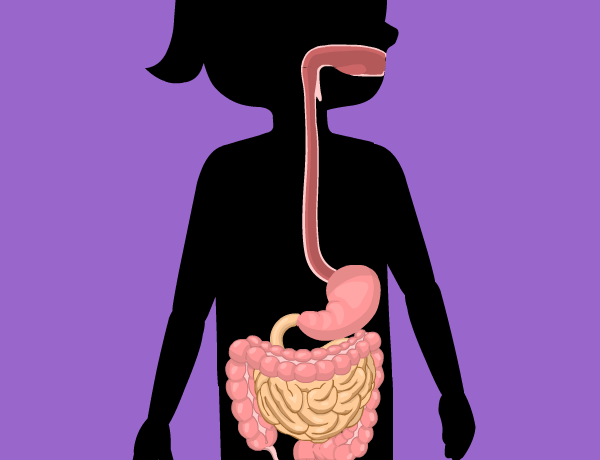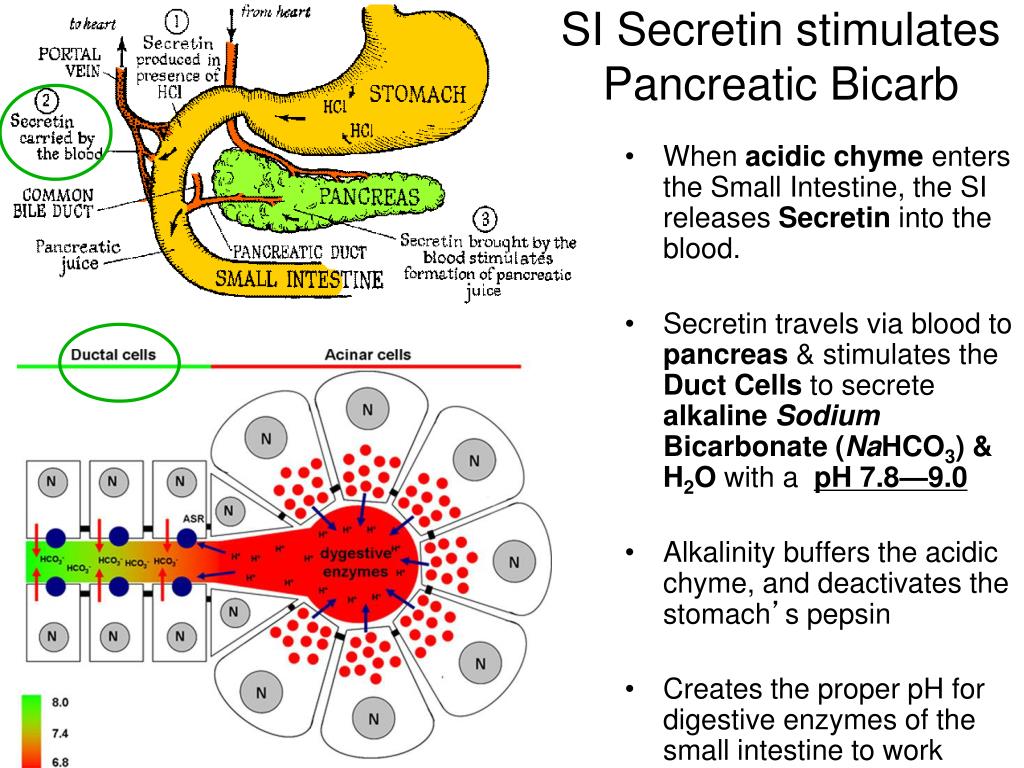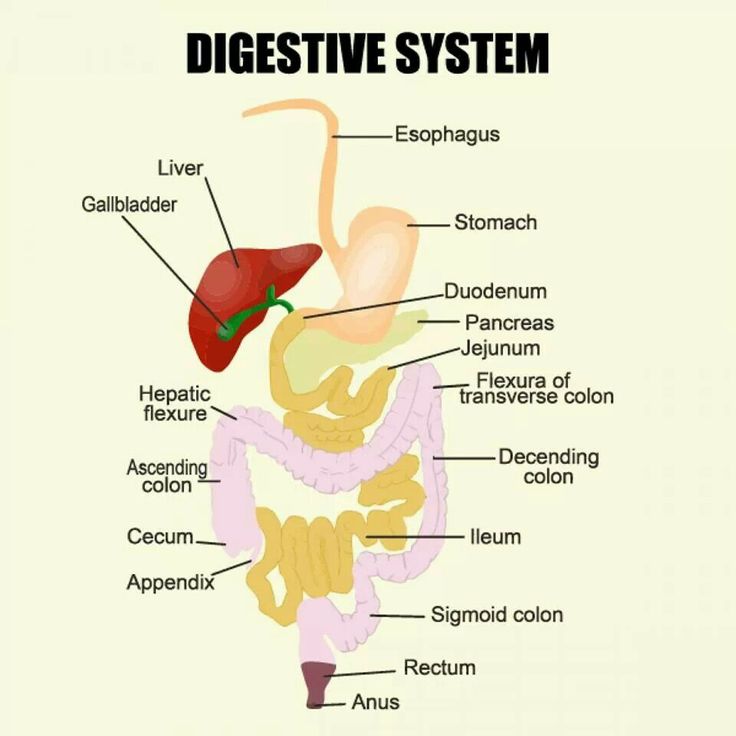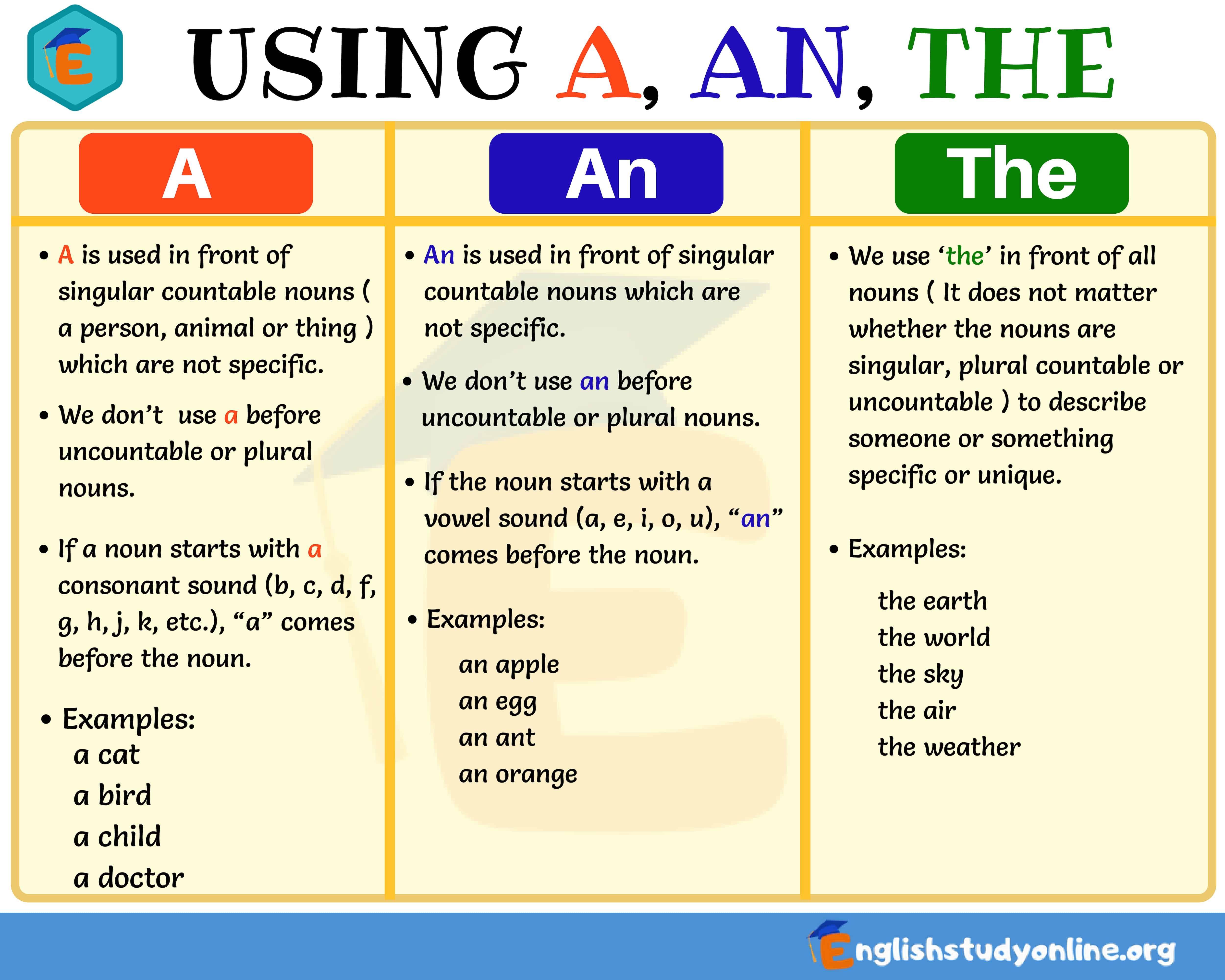Why do we get gas. Why Do We Fart? Unveiling the Science Behind Flatulence and Digestive Gas
What causes flatulence in the human body. How many times does the average person pass gas daily. Which foods are most likely to produce intestinal gas. Can certain medical conditions increase gas production. Is farting a normal and healthy bodily function.
The Physiology of Flatulence: Understanding Why We Pass Gas
Flatulence, commonly known as farting, is a natural bodily function that occurs as part of the digestive process. But what exactly causes this phenomenon? Let’s delve into the science behind why we produce and expel gas.
The human body produces intestinal gas through two primary mechanisms:
- Exogenous air: This refers to gases that enter the body from external sources, primarily through swallowing air while eating, drinking, or smoking.
- Endogenous gas: This is gas produced within the body when bacteria in the colon break down undigested food particles.
Exogenous air consists mainly of oxygen, nitrogen, and carbon dioxide. On the other hand, endogenous gas is primarily composed of hydrogen and, in some individuals, methane. Interestingly, only about 1% of the gas we expel contains the sulfurous compounds responsible for the characteristic unpleasant odor.

How Often Do People Typically Fart?
Would you be surprised to learn that the average person passes gas between 12 and 25 times a day? This frequency is entirely normal and healthy, despite the social stigma often associated with flatulence. The volume of gas produced can vary significantly from person to person, ranging from 0.6 to 1.8 liters per day.
The Role of Diet in Gas Production: Foods That Make You Fart
Our diet plays a crucial role in determining the amount and composition of intestinal gas we produce. Certain foods are more likely to cause flatulence due to their chemical makeup and how our bodies process them.
Carbohydrates: The Primary Culprits
Undigested carbohydrates are a common cause of gas. When the stomach and small intestine cannot fully break down these foods, they move into the large intestine. Here, bacteria begin to ferment them, releasing gas as a byproduct. Some of the main carbohydrate offenders include:
- Sugars: Fructose, raffinose, and sorbitol (found in some fruits and artificial sweeteners)
- Soluble fiber: Present in dried beans, nuts, and fruits
- Insoluble fiber: Found in root vegetables and wheat bran
- Starches: Such as those in corn, wheat, and potatoes
High-Gas Producing Foods
While individual responses to foods can vary, some are notorious for producing high levels of intestinal gas:

- Raffinose-rich foods: Beans, whole grains, asparagus, broccoli, Brussels sprouts, and cabbage
- High-sulfur foods and drinks: Garlic, onions, cruciferous vegetables, wine, and beer
- Sugar alcohols: Often found in “sugar-free” processed foods
Medical Conditions That Can Increase Gas Production
While flatulence is normal, certain medical conditions can lead to increased gas production and discomfort. These include:
- Lactose intolerance: Affects approximately 70% of adults globally
- Celiac disease: Can cause painful bloating and gas among its 200+ symptoms
- Irritable Bowel Syndrome (IBS): A chronic condition affecting 10-15% of Americans
If you suspect you may have one of these conditions, it’s essential to consult with a healthcare professional for proper diagnosis and treatment.
Managing Flatulence: Dietary Strategies and Lifestyle Changes
For those experiencing excessive or uncomfortable gas, there are several strategies that can help manage symptoms:
The Low-FODMAP Diet
The low-FODMAP diet has shown promising results in reducing gastrointestinal symptoms, particularly for individuals with IBS. This diet involves limiting foods that are high in fermentable oligosaccharides, disaccharides, monosaccharides, and polyols. Studies have found that 50-86% of people with IBS who followed this diet experienced a reduction in symptoms.

Lifestyle Modifications
In addition to dietary changes, certain lifestyle modifications can help reduce excessive gas:
- Eating slowly and chewing food thoroughly to reduce air swallowing
- Avoiding carbonated beverages and using straws, which can increase air intake
- Regular exercise to promote healthy digestion and bowel movements
- Stress reduction techniques, as stress can exacerbate digestive issues
Fascinating Flatulence Facts: Debunking Myths and Misconceptions
Despite being a universal human experience, flatulence is often shrouded in myths and misconceptions. Let’s explore some intriguing facts about farting:
- Age and gender do not significantly affect the amount of gas a person produces.
- The majority of gas we expel (about 99%) is odorless.
- Methane production from livestock, including cow flatulence, accounts for approximately 36% of methane pollution from human activity, according to the EPA.
These facts underscore that flatulence is a normal, healthy bodily function, regardless of age or gender.

The Environmental Impact of Flatulence: From Humans to Livestock
While human flatulence is generally not considered an environmental concern, the same cannot be said for livestock emissions. The methane produced by cattle and other ruminants contributes significantly to greenhouse gas emissions.
Livestock Emissions: A Global Concern
The Environmental Protection Agency (EPA) estimates that methane production from livestock, primarily through their digestive processes (including flatulence), accounts for about 36% of the methane pollution generated by human activity. This statistic highlights the unexpected ways in which biological processes can impact our environment on a global scale.
Innovative Solutions to Reduce Livestock Emissions
As awareness of this issue grows, researchers and agricultural experts are exploring various strategies to mitigate the environmental impact of livestock emissions:
- Dietary modifications for cattle to reduce methane production
- Improved manure management practices
- Development of methane-capturing technologies
- Exploration of alternative, lower-emission livestock options
These efforts demonstrate how understanding seemingly mundane biological processes like flatulence can lead to important environmental innovations.

The Social and Cultural Aspects of Flatulence
Despite its universality, flatulence remains a taboo subject in many cultures. This social stigma can lead to discomfort and embarrassment, even though passing gas is a perfectly natural and healthy bodily function.
Historical Perspectives on Flatulence
Attitudes towards flatulence have varied widely across different cultures and historical periods. In some ancient societies, public farting was considered acceptable or even humorous, while in others, it was seen as a grave social faux pas.
Flatulence in Popular Culture
In modern times, flatulence has become a source of humor in various forms of media, from children’s books to adult comedy. This comedic treatment can serve as a way to normalize discussions about bodily functions and reduce associated stigma.
Medical Perspectives on “Holding It In”
Is it harmful to suppress flatulence? While occasionally holding in gas is unlikely to cause significant issues, habitually suppressing the urge to pass gas can lead to discomfort, bloating, and potentially more serious digestive problems. Medical professionals generally advise against prolonged suppression of natural bodily functions.

Innovations in Flatulence Research and Management
As our understanding of digestive processes grows, so does our ability to manage and even utilize flatulence in innovative ways.
Diagnostic Tools
Researchers have developed sophisticated tools to analyze the composition of intestinal gas, which can provide valuable insights into digestive health and potential gastrointestinal disorders.
Odor-Neutralizing Technologies
For those concerned about the social implications of flatulence, various products have been developed to neutralize odors, from activated charcoal underwear to digestive enzyme supplements.
Harnessing Methane from Human Waste
In an intriguing twist, some researchers are exploring ways to harness the methane produced by human waste (including that from flatulence) as a renewable energy source. While still in its early stages, this research highlights the potential for turning a perceived problem into a valuable resource.
As we continue to explore the complexities of human digestion and its byproducts, it’s clear that flatulence, far from being merely a source of embarrassment or humor, plays a significant role in our physiological processes and potentially in our future energy solutions.

Why do we fart? 10 facts about flatulence
Flatulence and flatus are medical terms for what is commonly known as farting. While people do not tend to discuss farting openly, it is something that everyone does.
In fact, according to some research, the average person passes gas about 12–25 times a day. In this article, learn about why people produce gas and discover some other fascinating facts.
Share on PinterestGases produced during the digestive process cause flatulence.
The body produces intestinal gas as part of the process of digestion. Once this gas is inside the body, it needs to be released somehow. It is usually expelled through the anus as flatulence or out of the mouth as a burp.
Some intestinal gas comes from the air that people swallow when they are eating, chewing gum, drinking through a straw, or smoking.
Oxygen, nitrogen, and carbon dioxide are the primary external gases found inside the body. They make up what is called exogenous air.
Intestinal gas is produced within the body when bacteria in the colon break down food. This is called endogenous gas.
This is called endogenous gas.
Endogenous gas consists mainly of hydrogen and, for some people, methane. It can also contain small amounts of other gases, such as hydrogen sulfide, which make farts smell bad.
However, bad smells only apply to about 1 percent of the gas that people expel, most of which is almost odor-free.
Undigested carbohydrates are a common cause of gas, as the stomach and the small intestine cannot break these foods down. Instead, these carbohydrates move into the large intestine, where bacteria begin to break them down, releasing intestinal gas in the process.
Undigested carbohydrates include:
- Sugars: such as fructose, raffinose, and sorbitol, which some fruit and artificial sweeteners contain.
- Soluble fiber: found in dried beans, nuts, and fruit.
- Insoluble fiber: found in root vegetables and wheat bran, amongst other foods.
- Starches: such as corn, wheat, and potatoes.

According to the International Foundation for Functional Gastrointestinal Disorders (IFFGD), foods that make one person fart will not necessarily have the same effect on someone else.
However, some foods are known to create high levels of intestinal gas, including:
- Foods rich in raffinose: Humans lack the enzyme needed to digest raffinose, a complex sugar. When bacteria in the gut try to process it, they release lots of gas. Raffinose is plentiful in beans, whole grains, asparagus, broccoli, Brussels sprouts, and cabbage.
- High-sulfur foods and drinks: Although high-sulfur foods are an essential part of a healthful diet, eating a lot of them can lead to more frequent and pungent farts. These foods include garlic, onions, and cruciferous vegetables, such as cauliflower and broccoli. Some drinks, including wine and beer, are also high in sulfur.
- Foods made with sugar alcohols: Sugar alcohols provide sweetness without the calories of regular sugar, so they are often present in “sugar-free” processed foods.
 The body does not digest them completely, so they may cause gas.
The body does not digest them completely, so they may cause gas.
Although everyone farts, people with certain conditions may have more problems with intestinal gas than others. These conditions include:
- Lactose intolerance: About 70 percent of adults globally do not have enough of the enzyme that helps them digest milk and milk products. For people with lactose intolerance, eating dairy can cause significant discomfort, gas, bloating, and diarrhea.
- Celiac disease: There are more than 200 symptoms of celiac disease, including painful bloating and gas. People with celiac disease are unable to digest gluten.
- Irritable bowel syndrome: Also known as IBS, this is a chronic condition affecting 10–15 percent of Americans. Symptoms include abdominal pain, diarrhea, constipation, and gas.
Individuals who think they may have one of these conditions should see a doctor for a confirmed diagnosis.
Some diets can help people with gastrointestinal conditions reduce their symptoms. One of these is known as the low-FODMAP diet.
One of these is known as the low-FODMAP diet.
By following a low-FODMAP diet, a person will consume fewer foods that are fermentable, or that contain oligosaccharides, disaccharides, monosaccharides, and polyols.
Studies have found that 50–86 percent of people with IBS who followed this diet had a reduction in symptoms.
Share on PinterestIt is normal and healthy for a person to fart.
Although farting is not typically a conversation starter, there is plenty to learn about it. Facts about flatulence include:
- The average person produces 0.6–1.8 liters of intestinal gas each day.
- The Environmental Protection Agency (EPA) estimates that methane production from livestock (essentially cow farts) makes up about 36 percent of the methane pollution that human activity generates.
- Research has found no significant difference between the amount that younger and older people fart. Likewise, there is no notable difference between the sexes.
- Healthy individuals pass gas between 12 and 25 times a day.
 However, it is not uncommon for people to fart more than this, depending on their choice of foods.
However, it is not uncommon for people to fart more than this, depending on their choice of foods. - Only 1 percent of the gases expelled in farts smell bad. These include foul-smelling gases such as hydrogen sulfide.
- More than 99 percent of the gas that people pass consists of just nitrogen, oxygen, carbon dioxide, hydrogen, and methane.
- People pass more gas when they are asleep.
- The word “fart” comes from the Old English word “feortan,” which means “to break wind.”
- Soaking beans in water overnight can reduce their tendency to trigger farting.
- Sociologists who interviewed college students regarding their feelings about farting found that heterosexual women were more likely to worry that people hearing them fart would find it disgusting, while heterosexual men were the most likely to think it was funny.
Although farting is as natural as eating or breathing, it can still cause embarrassment. Even people whose level of intestinal gas is well within the normal range may try to limit how much gas they pass.
Fortunately, studies have found that adjusting a person’s diet can result in fewer farts.
Over-the-counter commercial enzyme products, such as Beano, can also reduce the body’s production of intestinal gas. However, these products are not usually suitable for long-term use.
For a more natural approach, a person can eat smaller meals more frequently and drink peppermint tea to relieve bloating and flatulence.
What Is a Fart and How Does It Happen?
Farts are your body’s way of releasing gas that builds up due to swallowed air, the digestive process, and other factors.
Flatulence, also known as farting, is something everyone experiences. It’s the release of intestinal gas, usually as a result of digestion. Gas can be found throughout the digestive tract, including the stomach, small intestine, colon, and rectum.
We fart because of the buildup of gas in our bodies, typically due to:
- Digestion: When your body processes digestive fluids, carbon dioxide gas is produced.

- Swallowed air: We all swallow air throughout the day, including from carbonated beverages or taking in air as we chew. Some medical conditions can cause aerophagia (excessive air swallowing).
- Bacteria in your intestines: Your intestinal bacteria (microbiome) help your body digest certain foods. This process releases hydrogen and carbon dioxide gases.
- Changes to your diet: When you eat more high-fiber foods than usual, your intestinal bacteria need to work harder. This causes an increase in gas. Over time, you’ll have less gas as your body adjusts to a high-fiber diet.
All that gas has to go somewhere. Some of it can be absorbed by the body. But when too much of it gathers in your intestines, you may feel bloated and uncomfortable. Flatulence allows for a painless means of escape for this gas.
Sometimes, you may experience more flatulence than usual. Increased farting can stem from a natural body reaction or in some cases, an underlying medical condition. Factors that can affect how much you fart include:
Factors that can affect how much you fart include:
Time of day
A buildup of gas-producing foods and swallowed air during the day may make you more flatulent in the evening.
Also, you’re more likely to fart when the muscles in the intestines are stimulated. When you’re about to have a bowel movement, for example, those muscles are moving stool to the rectum.
Other activities can also trigger flatulence, such as exercise or even coughing.
Certain foods
Some foods, including beans, broccoli, and bran, can make some people gassier.
Foods don’t affect everyone the same way, though. You may know your troublesome foods, so be aware of them if you’re concerned about being gassy.
Some high-fiber foods can create excess gas during digestion. If you suddenly start eating a lot more fiber than usual, you’ll probably notice an uptick in gas and flatulence. To prevent this, increase your intake of high-fiber foods slowly over time.
Sugar alcohols (a type of low-calorie sweetener) have also been linked to flatulence. These sweeteners include erythritol, maltitol, mannitol, sorbitol, and xylitol. Eating larger amounts of these sweeteners can make digestive upset more likely.
These sweeteners include erythritol, maltitol, mannitol, sorbitol, and xylitol. Eating larger amounts of these sweeteners can make digestive upset more likely.
Some people lack the enzyme lactase, which is essential for properly digesting many dairy products. You can be born with lactose intolerance or it could develop as you age.
It’s also possible to have an intolerance to fructose or a category of carbohydrates called FODMAPs.
If you think you may need to make major changes to your diet, always talk with your doctor or a registered dietitian first.
Pregnancy
Alongside the amazing changes your body goes through when you’re pregnant, there are some unpleasant changes, such as increased gas production.
This change is the result of increased hormonal activity that tends to slow down your digestion, allowing more gas to build up in your intestines.
Menstruation
Hormonal changes before and during your period can also affect your digestive tract. This can sometimes lead to increased flatulence.
This can sometimes lead to increased flatulence.
Medical conditions
Everyone farts — it’s a normal part of the digestive process. However, in some cases, increased gas can be a symptom of an underlying medical condition.
Conditions affecting the digestive tract may cause you to produce more gas. These include:
- constipation
- irritable bowel syndrome (IBS)
- small intestinal bacterial overgrowth (SIBO)
- celiac disease
On its own, farting isn’t usually a cause for concern. But if you notice you’re passing gas frequently or you have other symptoms along with flatulence, talk with your doctor.
Sometimes, certain habits can contribute to excess gas and farting. If this is the case, lifestyle changes may help.
Preventing increased gas may be as simple as adjusting your diet. If you aren’t sure which foods cause gas for you, starting a food journal can help you track the foods you eat and your symptoms.
If you’re especially sensitive to beans or other common culprits, eating smaller portions or swapping them out for other healthy foods may be options for you.
If you’re lactose intolerant, your doctor will advise you to avoid foods high in lactose, such as milk and soft cheeses. Using a lactase supplement that provides the enzyme to make digesting dairy easier may also be an option.
Keep in mind that major changes to your diet should only be undertaken with the help of a doctor or registered dietitian.
To decrease your gas, you may want to stop drinking carbonated beverages. You can also reduce the amount of air you swallow by:
- quitting smoking, if you smoke
- avoiding chewing gum and sucking on candies
- eating and drinking slowly
- ensuring that your dentures fit properly, if you use dentures
Be careful not to suddenly boost your fiber intake, as that can also cause gas problems.
The average person farts about 15 times per day, though some people pass gas much more or less frequently. You may be unaware of much of this activity because you’re asleep or the gas release is so minor.
Passing gas more than 25 times per day may mean you have excessive flatulence. Excessive flatulence is a reason to talk with your doctor. It could mean you have a gastrointestinal condition.
It’s also important to see your doctor if you have other symptoms that are bothering you along with farting. These may include:
- abdominal pain
- persistent bloating
- diarrhea
- constipation
- unexplained weight loss
- signs of an infection, such as fever or chills
- loss of bowel control
- blood in stools
If you’re bothered by flatulence or notice sudden changes related to your digestion or bathroom habits, see your doctor. If you have an underlying condition, treating it may reduce excess gas.
What is made from natural gas – a list of what can be produced from gas
Natural gas perfectly enters into a chemical combustion reaction. Therefore, most often energy is obtained from it – electrical and thermal. But on the basis of gas, fertilizer, fuel, paint and much more can be made.
But on the basis of gas, fertilizer, fuel, paint and much more can be made.
Significant volumes of gas are also used by the metallurgical industry. But here, natural gas is also used as a source of energy – for heating blast furnaces.
Compressed gas is produced at automobile CNG filling compressor stations (CNG) by compressing natural gas supplied through a gas pipeline to 20–25 MPa (200–250 atmospheres).
Natural gas can also be used to produce liquid motor fuels using gas-to-liquid (GTL) technology. Since natural gas is a rather inert product, during processing it is almost always converted at the first stage into a more reactive gas-vapor mixture – the so-called synthesis gas (a mixture of CO and H 2 ).
Then it is sent for synthesis to obtain liquid fuel. This can be the so-called synthetic oil, diesel fuel, as well as lubricating oils and paraffins.
German chemists Franz Fischer and Hans Tropsch were the first to obtain liquid hydrocarbons from syngas in 1923. True, then they used coal as a source of hydrogen. Various versions of the Fischer-Tropsch method are currently used in many gas-to-liquids processes on the market.
True, then they used coal as a source of hydrogen. Various versions of the Fischer-Tropsch method are currently used in many gas-to-liquids processes on the market.
Topping
Primary gas processing takes place at gas processing plants – gas processing plants.
Natural gas usually contains a variety of impurities in addition to methane, which must be separated. These are nitrogen, carbon dioxide, hydrogen sulfide, helium, water vapor.
Therefore, first of all, the gas at the gas processing plant undergoes special processing – cleaning and drying. Here, the gas is compressed to the pressure required for processing. At stripping plants, gas is separated into unstable natural gasoline and stripped gas, a product that is subsequently pumped into main gas pipelines. The same already purified gas goes to chemical plants, where methanol and ammonia are produced from it.
And unstable natural gasoline after separation from the gas is fed to gas fractionation plants, where light hydrocarbons are separated from this mixture: ethane, propane, butane, pentane. These products also become raw materials for further processing. From them further receive, for example, polymers and rubbers. And the mixture of propane and butane itself is a finished product – it is pumped into cylinders and used as household fuel.
These products also become raw materials for further processing. From them further receive, for example, polymers and rubbers. And the mixture of propane and butane itself is a finished product – it is pumped into cylinders and used as household fuel.
Paint, glue and vinegar
Methanol (CH 3 OH). It is used as a reagent to combat hydrate plugs that form in pipelines at low temperatures. Methanol can also become a raw material for the production of more complex chemicals: formaldehyde, insulating materials, varnishes, paints, adhesives, fuel additives, acetic acid.
Mineral fertilizers are also obtained from natural gas through several chemical transformations. The first step is ammonia. The process of obtaining ammonia from gas is similar to the gas-to-liquid process, but different catalysts, pressure and temperature are needed.
Ammonia itself is a fertilizer, and is also used in refrigeration plants as a coolant and as a raw material for the production of nitrogen-containing compounds: nitric acid, ammonium nitrate, carbamide.
Why gas in Russia should be cheap for industry and the population
Recent issue
RG-Nedelya
Rodina
Thematic applications
Union
Recent issue
Economy
05/25/2023 04:00
Share
Head of the National Energy Security Fund Konstantin Simonov in an interview with RG about a possible increase in gas prices and Russia’s chances to return to the European gas market In Europe, there are more and more rumors that the lost export earnings can be compensated for by rising prices in the domestic market. Information recently appeared in the media that Gazprom is proposing to liberalize wholesale gas prices for industrial consumers, which will cause its price to rise. Rumors are also circulating about the growth of tariffs for the population. Is such a scenario possible, how it will affect our economy and whether Russia has a chance to return to the European gas market, Konstantin Simonov, head of the National Energy Security Fund, professor at the Financial University under the Government of the Russian Federation, told Rossiyskaya Gazeta.
Excess gas in the country would be right to use to expand its consumption in the domestic market and reduce prices. / Alexander Korolkov
Good afternoon, Konstantin Vasilyevich! Will the liberalization of gas prices for industry cause gas prices to rise? Will we find ourselves in the position of Europe, where prices on the stock exchange reached $3,800 per thousand cubic meters of gas?
Konstantin Simonov: When this story began to unwind, everyone saw only one thing in it: yeah, we are being offered to raise domestic gas prices. In fact, the situation is absolutely anecdotal. Gazprom is asking to be allowed to sell gas on the domestic wholesale market at prices lower than those set by the Federal Antimonopoly Service. Now this is forbidden to Gazprom, while other companies have such an opportunity. This was done so that Gazprom, as a monopolist in pipeline gas exports and the manager of the unified gas supply system (UGSS), would not force other producers out of the domestic market. But since then a lot of water has flowed under the bridge. Independent producers already control more than 30% of deliveries to the domestic market in the area of the unified gas supply system. And ten years ago this figure was less than 20%. And the share grew precisely because Gazprom was forced to sell gas at a higher price. Eating off the market from Gazprom was explained by the latter’s monopoly on pipeline exports. But now everything has changed radically. We can already estimate how much pipeline exports Gazprom will lose in 2023 compared to 20210068 Approx. “RG” ). Last year, exports decreased by 80 billion cubic meters. In 2023, it will fall by another 30-35 billion cubic meters. That is, we have at least 110 billion cubic meters of gas locked up in the country without a real opportunity to quickly re-export them somewhere.
But since then a lot of water has flowed under the bridge. Independent producers already control more than 30% of deliveries to the domestic market in the area of the unified gas supply system. And ten years ago this figure was less than 20%. And the share grew precisely because Gazprom was forced to sell gas at a higher price. Eating off the market from Gazprom was explained by the latter’s monopoly on pipeline exports. But now everything has changed radically. We can already estimate how much pipeline exports Gazprom will lose in 2023 compared to 20210068 Approx. “RG” ). Last year, exports decreased by 80 billion cubic meters. In 2023, it will fall by another 30-35 billion cubic meters. That is, we have at least 110 billion cubic meters of gas locked up in the country without a real opportunity to quickly re-export them somewhere.
If a new round of significant increases in the cost of gas for the population starts now, it will be fundamentally wrong
But what about plans to increase gas exports to China?
Konstantin Simonov: I hope we will sign contracts for Power of Siberia-2, but the pipe still needs to be built. And we are talking about a maximum of 50 billion cubic meters. So we really now have a situation where there is a production surplus that could be used to create competition among suppliers within the country. It seems to me that this would be the right decision. The ban on Gazprom from reducing gas prices for industrial consumers on the domestic market looks absurd today. We have a certain excess of gas, and the monopoly itself offers to lower the price for it below the FAS tariffs, while other suppliers continue to say: no, no, no, wait, this discriminates us. Although objectively, this surplus of gas would be right to use to expand its consumption in the domestic market and reduce prices. This would be a powerful boost to economic growth.
And we are talking about a maximum of 50 billion cubic meters. So we really now have a situation where there is a production surplus that could be used to create competition among suppliers within the country. It seems to me that this would be the right decision. The ban on Gazprom from reducing gas prices for industrial consumers on the domestic market looks absurd today. We have a certain excess of gas, and the monopoly itself offers to lower the price for it below the FAS tariffs, while other suppliers continue to say: no, no, no, wait, this discriminates us. Although objectively, this surplus of gas would be right to use to expand its consumption in the domestic market and reduce prices. This would be a powerful boost to economic growth.
How much do you think the price could drop?
Konstantin Simonov: Such forecasts, of course, are not very responsible, but I think prices could fall by 10-15%.
Isn’t there a parallel with the USA, a country where gas is also produced a lot, there is market pricing, but gas is cheap?
Konstantin Simonov: The comparison is still not very correct. In the US, the gas market model is different. There are many mining companies that have the opportunity at the hub (gas trading point – Approx. “RG” ) to sell this gas. Moreover, production is separated from transportation. Accordingly, we are witnessing a classic version of competition, where transportation remains a natural monopoly segment, and various gas producers have the opportunity to maintain relatively low prices through the struggle with each other. I agree that if you look at the quotes, then yes, the prices in the US are quite comfortable, which Europeans cry about all the time. But we cannot build such a model.
In the US, the gas market model is different. There are many mining companies that have the opportunity at the hub (gas trading point – Approx. “RG” ) to sell this gas. Moreover, production is separated from transportation. Accordingly, we are witnessing a classic version of competition, where transportation remains a natural monopoly segment, and various gas producers have the opportunity to maintain relatively low prices through the struggle with each other. I agree that if you look at the quotes, then yes, the prices in the US are quite comfortable, which Europeans cry about all the time. But we cannot build such a model.
Russia has different gas prices for industry and households. But if in the West the population pays more for gas, then in Russia it pays less. Photo: Alexander Korolkov
What is the difference? After all, very often the American system is set as an example of the Russian one?
Konstantin Simonov: The climatic, geographical and social conditions of the USA are very different from ours. We cannot take and copy their model. In Russia, there are at least three features of the distortion in the gas industry that we must not forget. The first bias is social. The second is geographic. The third is seasonal. The first distortion is the most understandable, it is connected with the fact that in Russia, as you know, there are different prices for industry and for the population. But if in the West the population pays more for gas, then in Russia it pays less. And I think that this is a normal story for our country. But someone has to cover this distortion. We are talking about a communal apartment, about the social sector, and add here the gasification and regasification program, this is a serious amount of consumption.
We cannot take and copy their model. In Russia, there are at least three features of the distortion in the gas industry that we must not forget. The first bias is social. The second is geographic. The third is seasonal. The first distortion is the most understandable, it is connected with the fact that in Russia, as you know, there are different prices for industry and for the population. But if in the West the population pays more for gas, then in Russia it pays less. And I think that this is a normal story for our country. But someone has to cover this distortion. We are talking about a communal apartment, about the social sector, and add here the gasification and regasification program, this is a serious amount of consumption.
The second skew is geographical. It is connected with the fact that our prices are formed depending on the distance from the main center of gas production – the Yamalo-Nenets District. The price of gas differs, for example, in the Caucasus or the Smolensk region from its cost in Tyumen, Yekaterinburg or Chelyabinsk. But in reality, transportation costs do not cover this differential. Economically, it is much more profitable to sell gas closer to the Yamalo-Nenets District. Independent manufacturers, in fact, do just that. If we turn to some simple solutions – “we will introduce a market that will decide everything itself” – all these “remote” territories will immediately be left without gas. Nobody wants to sell gas in the Caucasus at today’s prices. About the East of the country, I generally keep silent. Who will take over the function of its gasification?
But in reality, transportation costs do not cover this differential. Economically, it is much more profitable to sell gas closer to the Yamalo-Nenets District. Independent manufacturers, in fact, do just that. If we turn to some simple solutions – “we will introduce a market that will decide everything itself” – all these “remote” territories will immediately be left without gas. Nobody wants to sell gas in the Caucasus at today’s prices. About the East of the country, I generally keep silent. Who will take over the function of its gasification?
The interests of gas consumers should be taken as the basis, not gas producers
The third bias is related to seasonality, which is often forgotten. We have almost a threefold difference in gas consumption in the coldest first quarter and in the warmest third quarter. And this means that during the spring-summer it is necessary to maintain a huge surplus of production capacities. There is no such thing in the USA. And all these “distortions” require additional funding. This was done by Gazprom, which is a gas producer and owner of the UGSS, as well as a gas exporter with a monopoly on pipeline exports, due to which these costs were covered.
This was done by Gazprom, which is a gas producer and owner of the UGSS, as well as a gas exporter with a monopoly on pipeline exports, due to which these costs were covered.
Now there is nothing to cover these costs?
Konstantin Simonov: Gazprom has become the main victim of the European policy of uprooting the energy partnership with Russia. So Gazprom will have difficulties. We have already talked about the volume of exports. I will add that April prices on European hubs are 60% lower than the same month in 2022. At the same time, note that Gazprom in 2022 fell more in production than in exports. This means that the company has reduced domestic sales. It’s a paradox, but she is not allowed to fight for the consumer. Naturally, the question arises about the rules of the game in the domestic gas market. But the interests of consumers should not be placed at the center of changes, not the interests of Gazprom or the interests of independent gas producers. And here it is important whether it is possible to combine the topic of relatively cheap gas and financing those distortions that exist in our gas market.
And here it is important whether it is possible to combine the topic of relatively cheap gas and financing those distortions that exist in our gas market.
Is this possible?
Konstantin Simonov: Gas today accounts for more than half of Russia’s energy balance, and it should remain its backbone. The world’s largest gas reserves are our obvious competitive advantage, and we must use it. We need to think about how to expand its consumption, but at the same time, naturally, make this consumption comfortable for the buyer. Be it the industrial sector, petrochemicals, utilities. This also includes a careful analysis of what is happening in the electricity sector, which seems to have been reformed long ago. You, say, are not embarrassed by the fact that the wholesale price for industry for electricity in Russia is about six times higher than for gas? In Germany, this gap is two times smaller. This is how the benefits of cheap gas are “eaten up”. Nevertheless, it is necessary to create further conditions for expanding gas consumption within the country. Hence the idea of accelerated gasification, which should give an additional 20 billion cubic meters to consumption by the end of the decade. It should become an important incentive, including for individual housing construction. Why do we need such a big country if almost the entire population is concentrated in a few cities? This is indeed a very important point from the point of view of the quality of life, and from the point of view of individual housing construction, and from the point of view of resettlement, and from the point of view of industrial development. An elementary example: when I read the news that India is going to invest $700 million in expanding the production of nitrogen fertilizers in Belarus, this raises questions in me. Why, in fact, is this happening in Belarus, and not on the territory of the Russian Federation? Nitrogen is made from methane, just like ammonia.
Nevertheless, it is necessary to create further conditions for expanding gas consumption within the country. Hence the idea of accelerated gasification, which should give an additional 20 billion cubic meters to consumption by the end of the decade. It should become an important incentive, including for individual housing construction. Why do we need such a big country if almost the entire population is concentrated in a few cities? This is indeed a very important point from the point of view of the quality of life, and from the point of view of individual housing construction, and from the point of view of resettlement, and from the point of view of industrial development. An elementary example: when I read the news that India is going to invest $700 million in expanding the production of nitrogen fertilizers in Belarus, this raises questions in me. Why, in fact, is this happening in Belarus, and not on the territory of the Russian Federation? Nitrogen is made from methane, just like ammonia. What prevents us from implementing new projects for the production of ammonia or fertilizers? It can also be beautifully packaged – as a solution to the problems of mankind in terms of food. Here is an elementary example of how you can expand gas consumption and change the positioning of Russia in the world. But such a policy should be based on comfortable domestic gas prices. In the industrial segment, there are just all the prerequisites for increased competition among manufacturers with a win for the consumer.
What prevents us from implementing new projects for the production of ammonia or fertilizers? It can also be beautifully packaged – as a solution to the problems of mankind in terms of food. Here is an elementary example of how you can expand gas consumption and change the positioning of Russia in the world. But such a policy should be based on comfortable domestic gas prices. In the industrial segment, there are just all the prerequisites for increased competition among manufacturers with a win for the consumer.
But it’s just another option that suggests itself, on the contrary, to raise prices on the domestic market to compensate for the losses?
Konstantin Simonov: This is too simple a decision that could put an end to the prospects for economic growth. Of course, all companies selling gas would like the price to be high. But, as I said, the basis should not be the interests of gas producers, but the interests of its consumers, not only industrial, but also the population.
But I repeat, gas should be the main stimulus for the development of our economy. Why should we give up the benefits bestowed by nature itself? At the same time, Russia cannot take other people’s recipes as the basis of its energy strategy, especially countries that do not have such gas reserves. Let’s take the same green energy. For me, it has always been absurd when Russia was and is still being imposed on the energy model of countries that have a completely different energy balance, a different system of mineral reserves, in general, everything is different. Well, you will not make bananas the main crop of our agriculture in Russia!
The next two years should be decisive in Europe’s gas consumption pattern
But prices are gradually rising for the population as well. Is it possible that part of the export losses will be included in the tariffs?
Konstantin Simonov: Yes, since December 1, 2022, the gas tariff has increased by 8. 5%. But inflation at the end of 2022 in Russia amounted to 11.94% It is important that the next indexation will take place only on July 1, 2024. If a new round of a noticeable increase in the cost of gas for the population begins now, this will be fundamentally wrong. Because the same regasification will look completely different. The initial message was correct: Russia is the world’s largest owner of a valuable resource – gas, and it provides this resource to its population. And it will turn out that we will first provide additional gasification for free, and then we will raise gas prices. It will be similar to Europe, how the topic of renewable energy is being promoted there. The Europeans were told: listen, we have a great idea, put solar panels on your roofs, provide yourself with energy, and we will buy your energy if there is a surplus. But then it turns out that you have to pay taxes for this, the batteries have a service life, and besides, they still have to be disposed of at their own expense.
5%. But inflation at the end of 2022 in Russia amounted to 11.94% It is important that the next indexation will take place only on July 1, 2024. If a new round of a noticeable increase in the cost of gas for the population begins now, this will be fundamentally wrong. Because the same regasification will look completely different. The initial message was correct: Russia is the world’s largest owner of a valuable resource – gas, and it provides this resource to its population. And it will turn out that we will first provide additional gasification for free, and then we will raise gas prices. It will be similar to Europe, how the topic of renewable energy is being promoted there. The Europeans were told: listen, we have a great idea, put solar panels on your roofs, provide yourself with energy, and we will buy your energy if there is a surplus. But then it turns out that you have to pay taxes for this, the batteries have a service life, and besides, they still have to be disposed of at their own expense. This “hockey” we do not need. Therefore, we must be extremely careful about the increase in the cost of gas for the population. I am sure that the government will be careful in this matter.
This “hockey” we do not need. Therefore, we must be extremely careful about the increase in the cost of gas for the population. I am sure that the government will be careful in this matter.
Konstantin Simonov: Gas should be the main stimulus for the development of our economy. Photo: Sergey Kuksin
We always return to the topic of export to Europe. Do you think we can regain our share of the European gas market?
Konstantin Simonov: We are now at a very interesting point. Everyone knows how Europe went through the last heating season. It was rescued by a warm winter, it was rescued by China, which resold LNG from its portfolio. It was bailed out by the United States, which was the main source of new LNG volumes. In 2022, about 20 million tons of LNG from new capacities appeared on the world market. Do not forget that Russia remained a major supplier of gas to Europe for most of 2022 – we sent them more than 60 billion cubic meters. And despite all this, Europe still had to reduce its total gas consumption during the high season (I emphasize – not only Russian, but gas in general) by about 20% compared to the average consumption over the past five years.
And despite all this, Europe still had to reduce its total gas consumption during the high season (I emphasize – not only Russian, but gas in general) by about 20% compared to the average consumption over the past five years.
Last winter they had to tighten their “gas belts”. And then these “gas belts” will have to be tightened even more. Including due to a further reduction in gas supplies from Russia. And the current relatively low prices at the hubs should not mislead anyone.
It is known exactly how much LNG will be produced in the world in the next few years. It may be less, but not more. Additional large volumes of Qatari gas will appear only in 2025. After that, new LNG capacities in the US and Canada should start operating. But how to live up to this date in the period of gas famine? In addition, the EU has fallen into a paradoxical trap. Eurobureaucrats are simultaneously convincing their own industry and population that gas as a fuel will soon be no longer needed at all, and that energy-intensive industries in Europe are doomed to die out. But they are immediately persuading suppliers alternative to Russia to come to Europe with “necessary and in-demand goods.” European importers are trying to avoid new 20-year contracts amid the EU’s declared plans to reduce gas demand. However, such a policy will adjust plans to launch new LNG capacities. Investors do not understand what volumes of gas Europe will really need in 10-15 years. European officials are not just fighting Russian gas. For them, this is part of a plan for the overall decarbonization of European energy.
But they are immediately persuading suppliers alternative to Russia to come to Europe with “necessary and in-demand goods.” European importers are trying to avoid new 20-year contracts amid the EU’s declared plans to reduce gas demand. However, such a policy will adjust plans to launch new LNG capacities. Investors do not understand what volumes of gas Europe will really need in 10-15 years. European officials are not just fighting Russian gas. For them, this is part of a plan for the overall decarbonization of European energy.
But European industry already has questions. After all, in fact, the EU now proposes a transition to a new economic model, where there is no place for gas chemistry, metallurgy and other industries. But in reality, it is a big question how the refusal of gas in general corresponds to the goals of the economic development of the EU. After all, not only aggressive lobbyists for an accelerated energy transition live in Europe. Therefore, the next two years will be decisive.


 The body does not digest them completely, so they may cause gas.
The body does not digest them completely, so they may cause gas. However, it is not uncommon for people to fart more than this, depending on their choice of foods.
However, it is not uncommon for people to fart more than this, depending on their choice of foods.